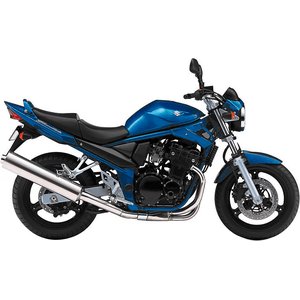Suzuki GSF 650 Bandit [2005-2006]: The Unapologetic All-Rounder That Still Delivers
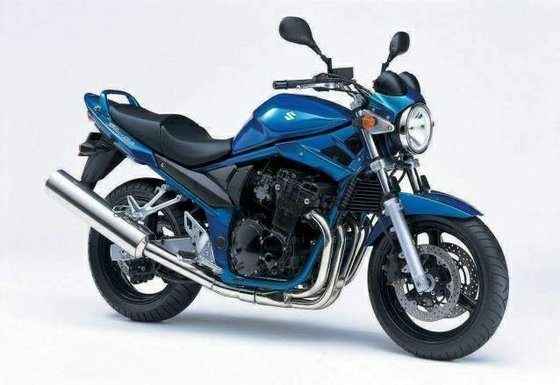
Introduction
The Suzuki GSF 650 Bandit (2005-2006) is a motorcycle that refuses to fade into obscurity. Part of the iconic Bandit lineage, this generation strikes a balance between accessibility and raw, unfiltered motorcycling joy. Designed as a "budget bike" for the masses, it’s a machine that prioritizes simplicity, reliability, and rider-friendly mechanics over cutting-edge tech. But don’t let its humble aspirations fool you—this Bandit has teeth. After spending time with this carbureted warrior, it’s clear why it remains a cult favorite among riders who value substance over flash.
Engine Performance: Carbureted Charm Meets Mid-Range Muscle
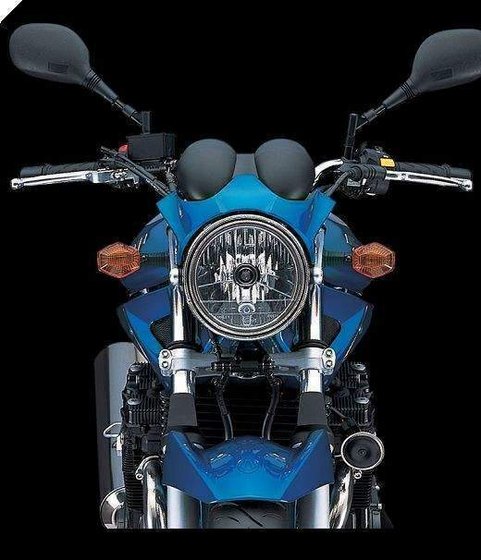
At the heart of the Bandit 650 lies its 656cc inline-four engine—a powerplant that feels like a love letter to the golden age of carburetors. Unlike modern fuel-injected engines, the Keihin CVR32 carbs deliver a buttery-smooth throttle response that’s refreshingly linear. There’s no snatchiness here, just an immediate connection between your wrist and the road.
Power Delivery:
- Peak Power: 77 hp @ 10,500 rpm (57.4 kW)
- Torque: 54 Nm (39.8 lb-ft) @ 9,500 rpm
The Bandit’s engine thrives in the mid-range. Below 7,000 rpm, it pulls with a satisfying urgency that makes overtaking or carving through city traffic effortless. While it won’t set land-speed records (top speed is around 198 km/h or 123 mph), the powerband is perfectly suited for real-world riding. The 6-speed gearbox is a willing partner, though shifts can feel slightly clunky when pushed hard.
Cold Starts? No Problem:
Carburetors often get a bad rap for finicky cold starts, but the Bandit’s setup is surprisingly forgiving. A quick choke pull and a blip of the throttle, and the engine settles into a steady idle. The air/oil cooling system keeps temperatures in check, even during spirited rides—though expect some heat soak in bumper-to-bumper traffic.
Handling & Chassis: Forgiveness Built Into Steel
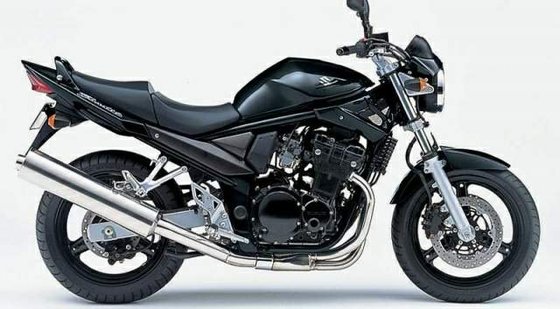
Suzuki’s double-cradle steel frame might lack the sex appeal of aluminum beam designs, but it delivers where it counts: stability. The 2005-2006 update introduced a stiffer frame (10% more rigid than predecessors) and a slightly lengthened swingarm, which translates to planted cornering and minimal wobble under hard acceleration.
Suspension Setup:
- Front: 41mm telescopic forks with fully adjustable preload
- Rear: Mono-shock with 7-way preload and 4-way rebound damping
The suspension leans toward comfort, soaking up potholes and uneven pavement without drama. Aggressive riders might find the front end too soft for track-day antics, but for daily commuting and weekend twisties, it’s spot-on. Ground clearance is adequate (130 mm / 5.1 inches), though the pegs will scrape if you push too hard.
Braking:
- Front: Dual 290mm discs with 2-piston calipers
- Rear: Single 240mm disc
Braking performance is predictable but not groundbreaking. The setup lacks the initial bite of radial calipers, requiring a firmer squeeze at the lever. Upgrading to sintered pads (more on that later) is a worthwhile mod for spirited riders.
Design & Ergonomics: Function Over Flair
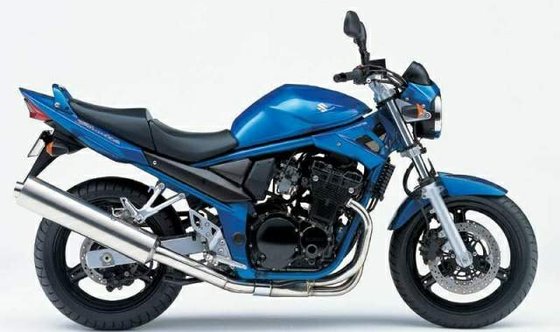
The Bandit’s design philosophy is unashamedly pragmatic. The 2005 refresh brought subtle tweaks—a blacked-out engine, pointier front fender, and digital instrument cluster—but this is no head-turner. Instead, it’s a bike that grows on you with its no-nonsense utility.
Rider Triangle:
- Seat Height: 770–790 mm (30.3–31.1 inches)
- Handlebar Position: Upright and relaxed
The adjustable seat and handlebars make it accessible for shorter riders while still accommodating taller pilots. The narrow fuel tank (20L / 5.3 US gal) lets you grip with your knees without straining, and the bench-style seat is forgiving on long hauls.
Competition: How the Bandit Stacks Up
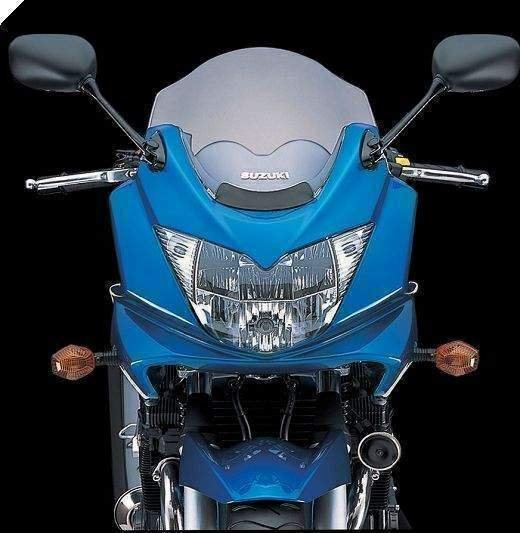
In the mid-2000s naked bike arena, the Bandit faced stiff competition. Here’s how it holds up:
- Honda CBF600:
- Similar power (78 hp) but heavier (214 kg / 472 lbs).
- More refined but lacks the Bandit’s carbureted character.
-
Winner for commuters; Bandit wins for enthusiasts.
-
Yamaha FZ6:
- Fuel-injected, rev-happy engine (98 hp).
- Sharper handling but harsher ride quality.
-
Bandit offers better low-end grunt and comfort.
-
Kawasaki Z750:
- Brute-force 106 hp engine.
- Aggressive styling and sharper brakes.
- Bandit counters with smoother power delivery and lower maintenance costs.
Verdict: The Bandit isn’t the fastest or flashiest, but its simplicity and reliability make it a standout for riders who prioritize longevity over lap times.
Maintenance: Keeping Your Bandit Battle-Ready
The Bandit’s air/oil-cooled engine and steel frame are built to last, but regular TLC is key. Here’s what to watch:
- Valve Adjustments:
- Intake: 0.10–0.15 mm (0.004–0.006 in)
- Exhaust: 0.18–0.23 mm (0.007–0.009 in)
-
Check every 24,000 km (15,000 miles).
-
Carb Sync & Cleaning:
- Keihin CVR32 carbs are robust but benefit from annual synchronization.
-
MOTOPARTS.store recommendation: Keihin Carb Rebuild Kit for smoother throttle response.
-
Chain & Sprockets:
- Stock gearing: 15/47 teeth.
-
Upgrade to a DID 520VX3 Chain for longevity.
-
Brake Fluid & Pads:
- DOT 4 fluid flush every 2 years.
-
Swap stock pads for EBC HH Sintered Pads for improved bite.
-
Suspension Tweaks:
- Front fork oil: SAE 10W (502–507 mL per leg).
- Consider Progressive Suspension Springs for heavier riders.
Final Thoughts: A Timeless Workhorse
The 2005-2006 Suzuki Bandit 650 isn’t about chasing trends—it’s about delivering a pure, unadulterated riding experience. Its carbureted engine and steel frame might seem archaic in today’s tech-driven market, but that’s precisely its charm. For riders seeking a dependable daily companion that’s easy to maintain and endlessly customizable, the Bandit remains a compelling choice.
Whether you’re retrofitting modern upgrades or keeping it stock, MOTOPARTS.store has the essentials to keep your Bandit running strong. From carb kits to braided brake lines, we’ve got your back—because even legends need a little love.
Specifications sheet
| Engine | |
|---|---|
| Stroke: | Four-stroke |
| Ignition: | Digital transistorized |
| Max power: | 57 kW | 76.0 hp |
| Max torque: | 54 Nm |
| Fuel system: | 4 x Keihin CVR32 carburetors |
| Max power @: | 10500 rpm |
| Displacement: | 656 ccm |
| Max torque @: | 9500 rpm |
| Configuration: | Inline |
| Cooling system: | Air/oil cooled |
| Compression ratio: | 10.5:1 |
| Number of cylinders: | 4 |
| Dimensions | |
|---|---|
| Wheelbase: | 1440 mm (56.7 in) |
| Dry weight: | 201 |
| Seat height: | 770–790 mm (30.3–31.1 in) |
| Overall width: | 770 mm (30.3 in) |
| Overall height: | 1090 mm (42.9 in) |
| Overall length: | 2110 mm (83.1 in) |
| Ground clearance: | 130 mm (5.1 in) |
| Fuel tank capacity: | 20 L (5.3 US gal) |
| Drivetrain | |
|---|---|
| Final drive: | chain |
| Chain length: | 112 |
| Transmission: | 6-speed |
| Rear sprocket: | 47 |
| Front sprocket: | 15 |
| Maintenance | |
|---|---|
| Rear tire: | 160/60 z-17 |
| Engine oil: | 10W40 |
| Front tire: | 120/70 z-17 |
| Brake fluid: | DOT 4 |
| Spark plugs: | NGK CR8EK |
| Spark plug gap: | 0.65 |
| Coolant capacity: | Not applicable (air/oil cooled) |
| Forks oil capacity: | 1.014 |
| Engine oil capacity: | 3.5 |
| Engine oil change interval: | Every 5000km or 2 years, whichever comes first |
| Valve clearance (intake, cold): | 0.10–0.15 mm |
| Valve clearance check interval: | 24,000 km / 15,000 mi |
| Valve clearance (exhaust, cold): | 0.18–0.23 mm |
| Recommended tire pressure (rear): | 2.5 bar (36 psi) |
| Recommended tire pressure (front): | 2.5 bar (36 psi) |
| Chassis and Suspension | |
|---|---|
| Frame: | Double cradle |
| Rear tire: | 160/60 z-17 |
| Front tire: | 120/70 z-17 |
| Rear brakes: | Single 240 mm disc, 2-piston caliper |
| Front brakes: | 2 x 290 mm discs, 2-piston calipers |
| Rear suspension: | Link-type monoshock, 7-way spring preload and 4-way rebound damping adjustable |
| Front suspension: | 41mm telescopic fork, preload fully adjustable |
| Rear wheel travel: | Not specified |
| Front wheel travel: | Not specified |



